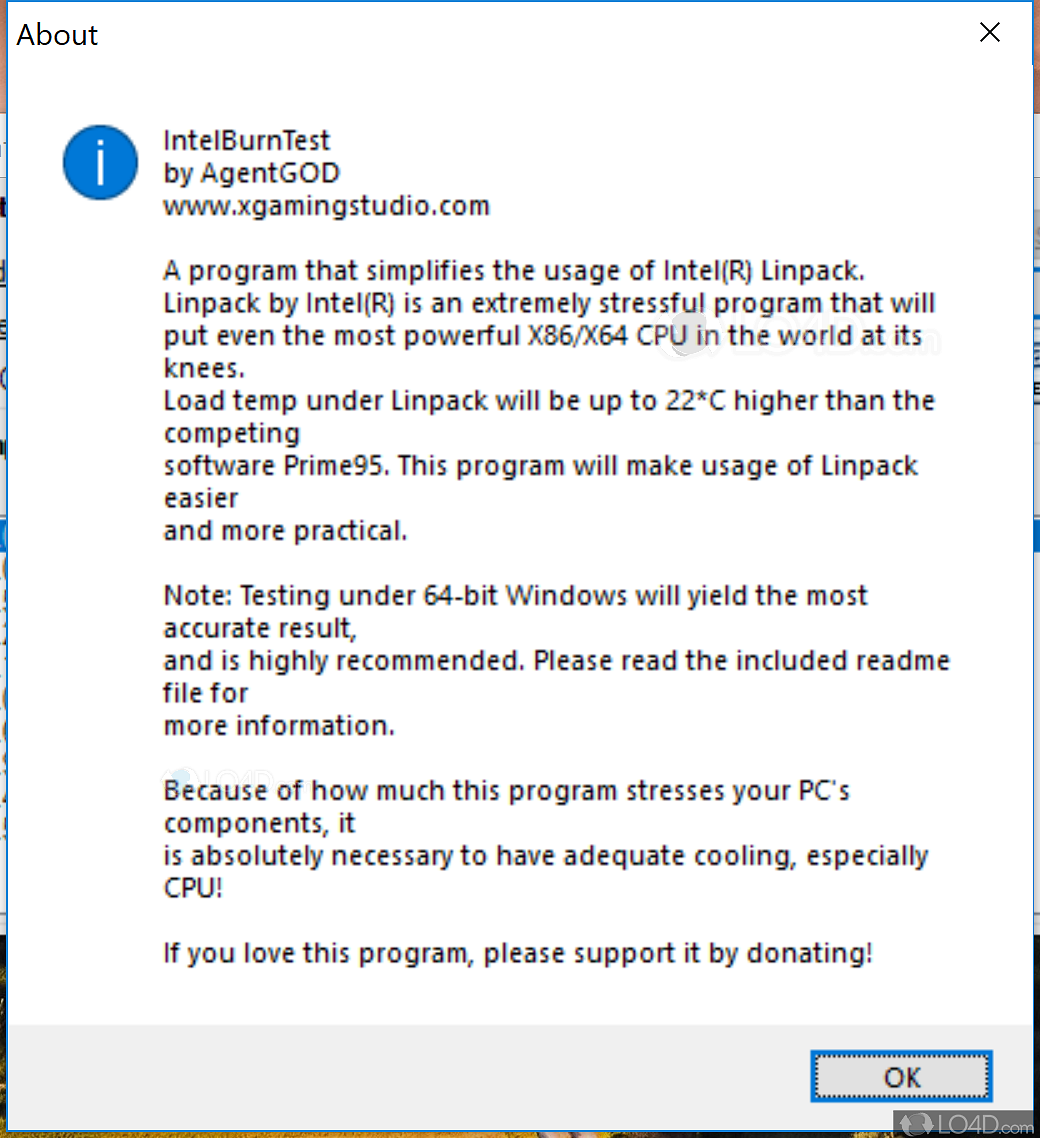
Click to EnlargeĪnd the program gave me the confirmation that all four cores of the processor were severely over-heating, and subject to thermal throttling. Once you start the application, select “Sensors-only” and click “Run”. I’m a linux user, and I’m not that familiar with Windows, so after some Google, I found that HWiNFO would do the job checking out the temperature and throttling. So I launched 3DMark benchmark, and the results were disappointing to say the least, as they were much lower than the scores I got with MeLE PCG01 Atom Z3735F Bay Trail mini PC. Nevertheless it was late, so I started the computer again the following day, and it was responsive, with an even higher SSD read speed as last night (~400MB/s). I had added some black tape a few hours ago, or the case was a bit reflective leading to lower temperature measurements. I checked the metal box temperature with an IR thermometer and got 46 C, which did not seem that high.
#Intel burn test cpu temperatures software#
CPU usage while starting Firefox and Browsing CNX Software It was very slow, and I had a a few “windows not responding” in the process. I’m currently testing a fanless mini PC with an Intel Celeron N3150 Braswell processor, and yesterday I noticed the frequency would be stuck at 0.22 GHZ (yes, that’s 220 MHz) at all times, even when starting the web browser and loading long web pages.

That also explains why computers with the same processor, storage and memory may have greatly different performance under load depending on their thermal design.

That’s why for example Intel processor have a maximum junction temperature (Tj max) so that if this temperature is reached the processor can slow down to cool things off, and avoid damaging itself. Recent processors all have the ability to adjust the operating frequency to either decrease power consumption, or make sure the processor does not overheat.


 0 kommentar(er)
0 kommentar(er)
